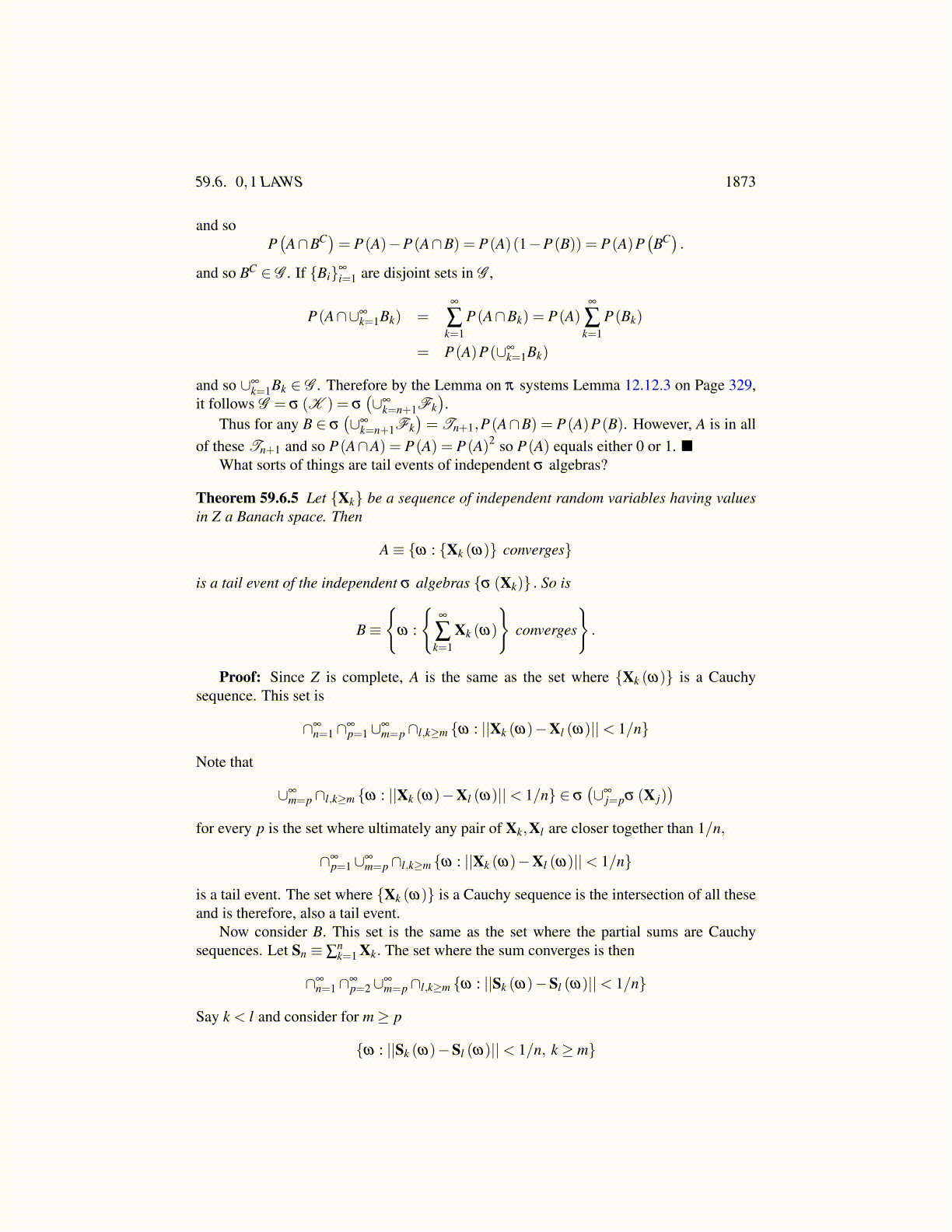
59.6. 0,1 LAWS 1873
Proof: It is necessary to show that the events X−1i j
(Bi j
)are independent events when-
ever Bi j are Borel sets. By Lemma 59.4.1 and the above Lemma 59.4.2, it suffices to verifythat the events
X−1i j
(g−1
mi j
(Cα̃,mi j
))=(
gmi j◦Xi j
)−1(Cα̃,mi j
)are independent where Cα̃,mi j
are the cones described in Lemma 59.4.2. Thus
α̃ =(αk1 , · · · ,αkm
)Cα̃,mi j
=
mi j
∏i=1
(−∞,αki ]
But this condition is implied when the finite dimensional valued random vectors gmi j◦Xi j
are independent.The above assertion also goes the other way as you may want to show.
59.6 0,1 LawsI am following [120] for the proof of many of the following theorems. Recall the set of ω
which are in infinitely many of the sets {An} is
∩∞n=1∪∞
m=n Am.
This is because ω is in the above set if and only if for every n there exists m≥ n such thatit is in Am.
Theorem 59.6.1 Suppose An ∈Fn where the σ algebras {Fn}∞
n=1 are independent. Sup-pose also that
∞
∑k=1
P(Ak) = ∞.
ThenP(∩∞
n=1∪∞m=n Am) = 1.
Proof: It suffices to verify that
P(∪∞
n=1∩∞m=n AC
m)= 0
which can be accomplished by showing
P(∩∞
m=nACm)= 0
for each n. The sets{
ACk
}satisfy AC
k ∈Fk. Therefore, noting that e−x ≥ 1− x,
P(∩∞
m=nACm)
= limN→∞
P(∩N
m=nACm)= lim
N→∞
N
∏m=n
P(AC
m)
= limN→∞
N
∏m=n
(1−P(Am))≤ limN→∞
N
∏m=n
e−P(Am)
= limN→∞
exp
(−
N
∑m=n
P(Am)
)= 0.